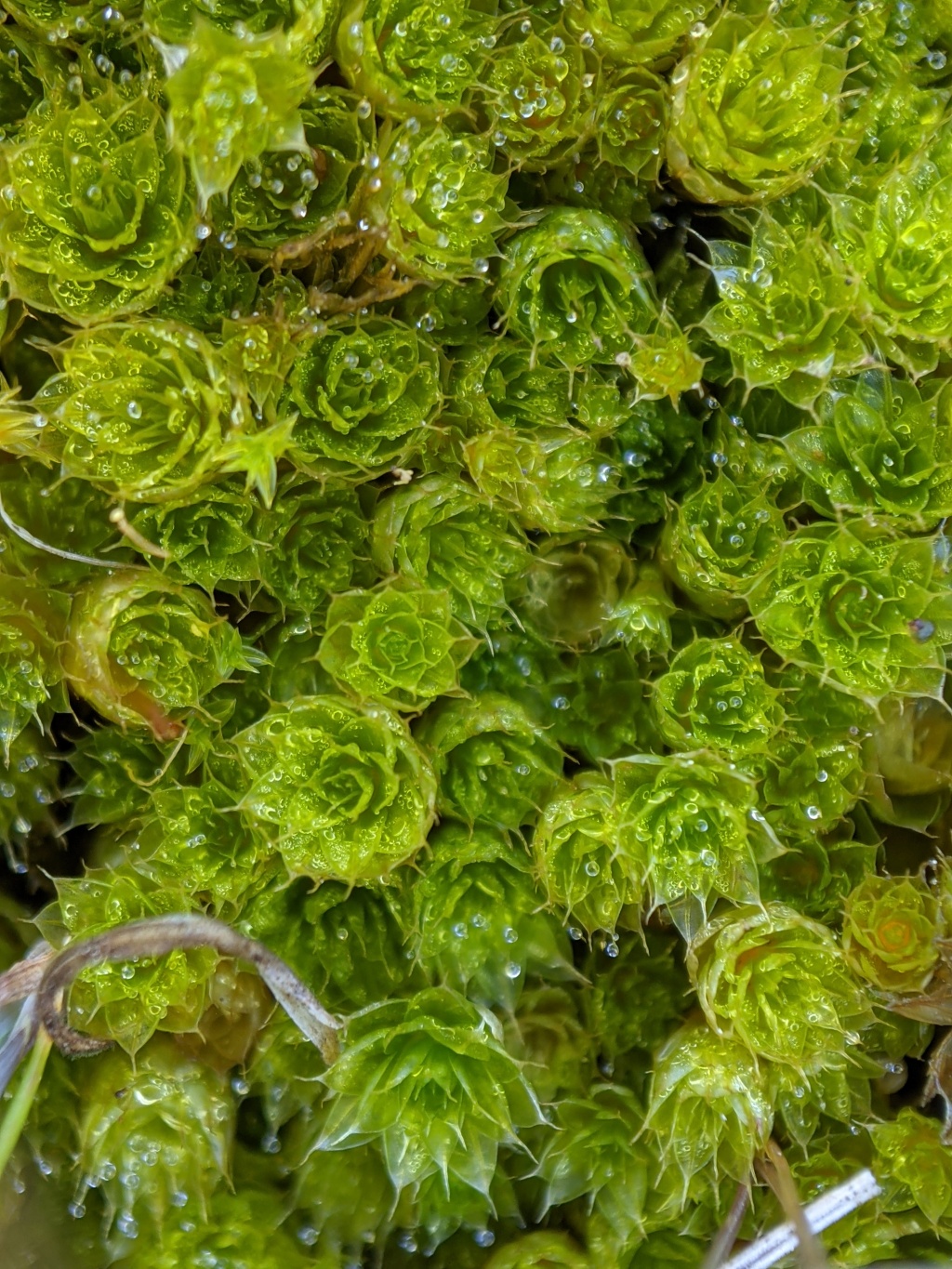Rosulabryum campylothecium
(Taylor) J.R.SpenceDioicous. Asexual propagaules absent. Loose to dense tufts on soil, yellowish green to bronze. Stems branching by innovation, 10–25 mm long, red-brown, tomentose toward base. Rhizoids red-brown. Leaves comose, erect-spreading or patent when moist, erect or twisted around stem when dry, broadly obovate or oblong-ovate, 2–3 mm long, strongly concave; apex acute; costa excurrent as a hairpoint; hairpoint straight, smooth or denticulate, commonly 0.275–0.6 mm long; margin with blunt teeth toward apex formed by projecting marginal cells, recurved in basal ¾, with 2–4 rows of longer and narrower cells forming a weak border; laminal cells in apical half rhomboidal-hexagonal, 35–45 μm long, 18–20 μm wide; basal laminal cells rectangular. Seta 15–25 mm long. Capsules horizontal or cernuous, clavate or oblong-pyriform, 1.5–2.5 mm long, weakly curved.
LoM, MuM, Wim, GleP, Brid, VVP, VRiv, RobP, MuF, GipP, WaP, Gold, CVU, GGr, DunT, NIS, EGL, EGU, HSF, HNF, VAlp. Widespread throughout the state but most commonly encountered in drier vegetation such as samphire, woodland, grassland, coastal vegetation, mallee, and exposed rocky areas near waterways. Also WA, SA, NSW, ACT and Tas. New Zealand and South America.
 Spinning
Spinning


